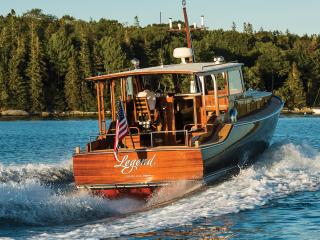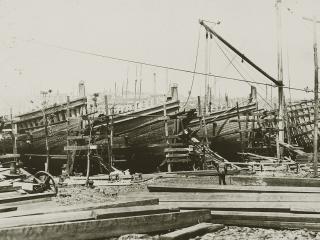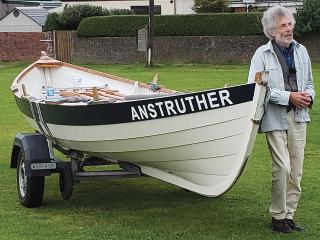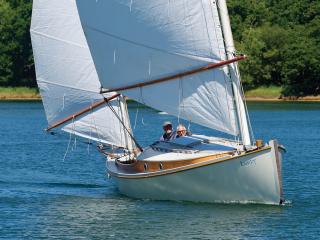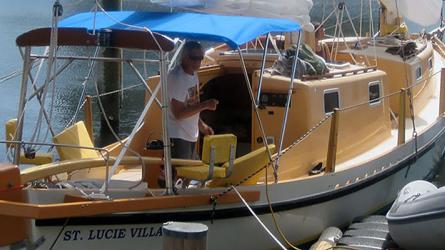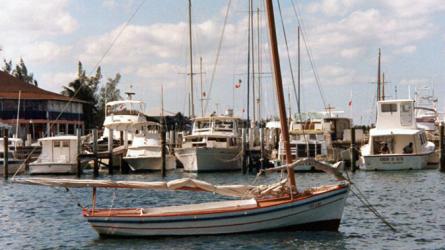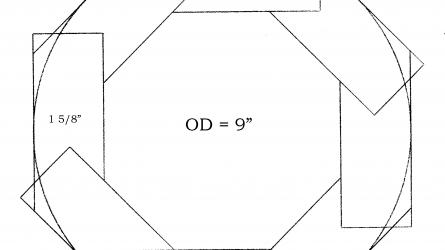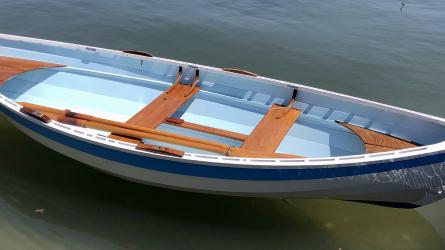January / February 2021
Glued Lapstrake Plywood Plank Clamps
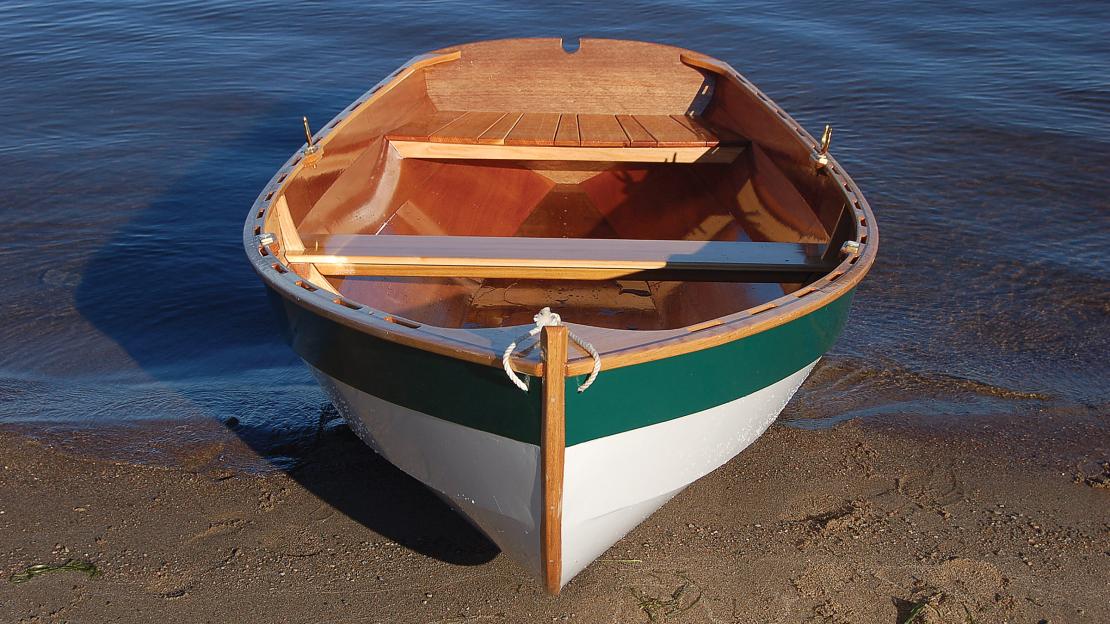
This Shellback dinghy, built purely for rowing, has a clean, bright-finished interior unmarred by temporary fastenings.
For a winter project last year, I decided to build the Joel White–designed Shellback dinghy. I was drawn to the boat’s elegant lines and lapstrake plywood construction. The plans were excellent and Eric Dow’s book How to Build the Shellback Dinghy was very helpful.
Conventional lapstrake planking is fastened together with rivets. Glued lapstrake planking is just what it sounds like: strakes of plywood are glued together over temporary molds or permanent frames and glued together with epoxy. There are no permanent mechanical fastenings but, typically, temporary screws driven through the laps hold the planks together while the glue cures; the screws are then removed and their holes filled. Because plywood is dimensionally stable—that is, it doesn’t swell and shrink when wetted and dried—the glued plank lap seams remain durable and watertight.
The plans are for a sailing dinghy, but I chose to build mine purely for rowing, so the interior is simple and clean, with no daggerboard trunk, maststep, or rudder. The hull is built of meranti marine plywood, and the stem, ’midship frame, gunwales, knees, breasthook, and keel, are of red oak. I used cedar for the thwarts and glued it all together with epoxy. In keeping with the theme of cleanliness and simplicity, I wanted the boat’s interior to be bright-finished, without any filled holes where temporary screws had been.
To read the rest of this article:
Click the button below to log into your Digital Issue Access account.
No digital access? Subscribe or upgrade to a WoodenBoat Digital Subscription and finish reading this article as well as every article we have published for the past 50-years.
ACCESS TO EXPERIENCE
2-for-1 Print & Digital Subscription Offer
For this holiday season, WoodenBoat is offering our best buy one, get one deal ever. Subscribe with a print & digital subscription for $42.95, and we’ll give you a FREE GIFT SUBSCRIPTION to share with someone special.
1 YEAR SUBSCRIPTION (6 ISSUES)
PLUS ACCESS TO MORE THAN 300 DIGITAL BACK ISSUES
PRINT+DIGITAL $42.95
Subscribe
To read articles from previous issues, you can purchase the issue at The WoodenBoat Store link below.
 Purchase this issue from
Purchase this issue from
